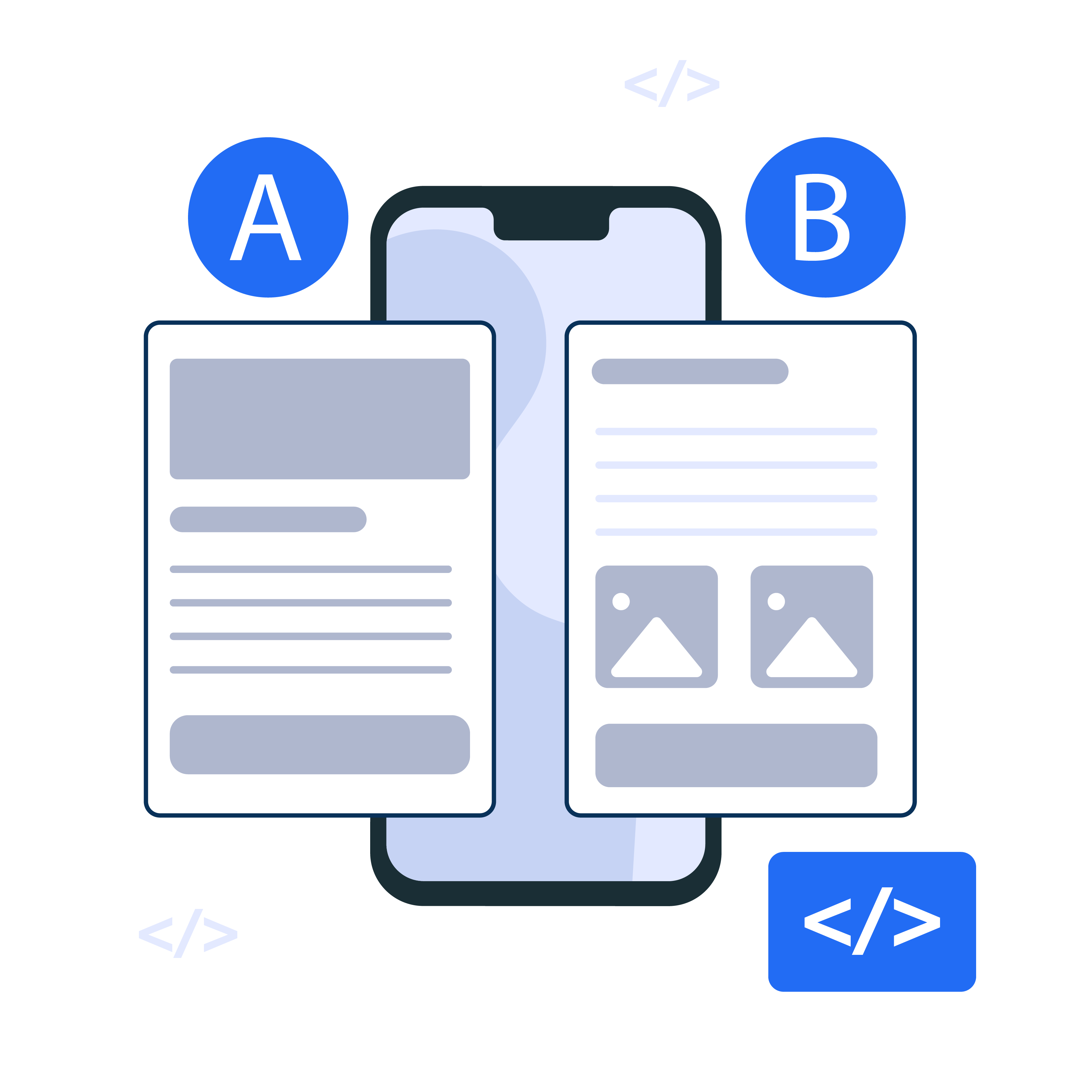What is A/B Testing?
A/B testing, also known as split testing, is a method of comparing two versions of a webpage, email, ad, or other marketing asset to see which one performs better.
In an A/B test, you create two versions—Version A (the control) and Version B (the variation)—and then show each version to different segments of your audience.
By analyzing the results, you can determine which version achieves your goal more effectively, whether it's increasing conversions, clicks, or engagement.
It's a way to make data-driven decisions about what works best for your audience.
Why is A/B Testing Important?
Most businesses waste money by guessing. They guess what their customers want, guess which design will convert, and guess which message will stick. The truth is, guessing doesn’t work.
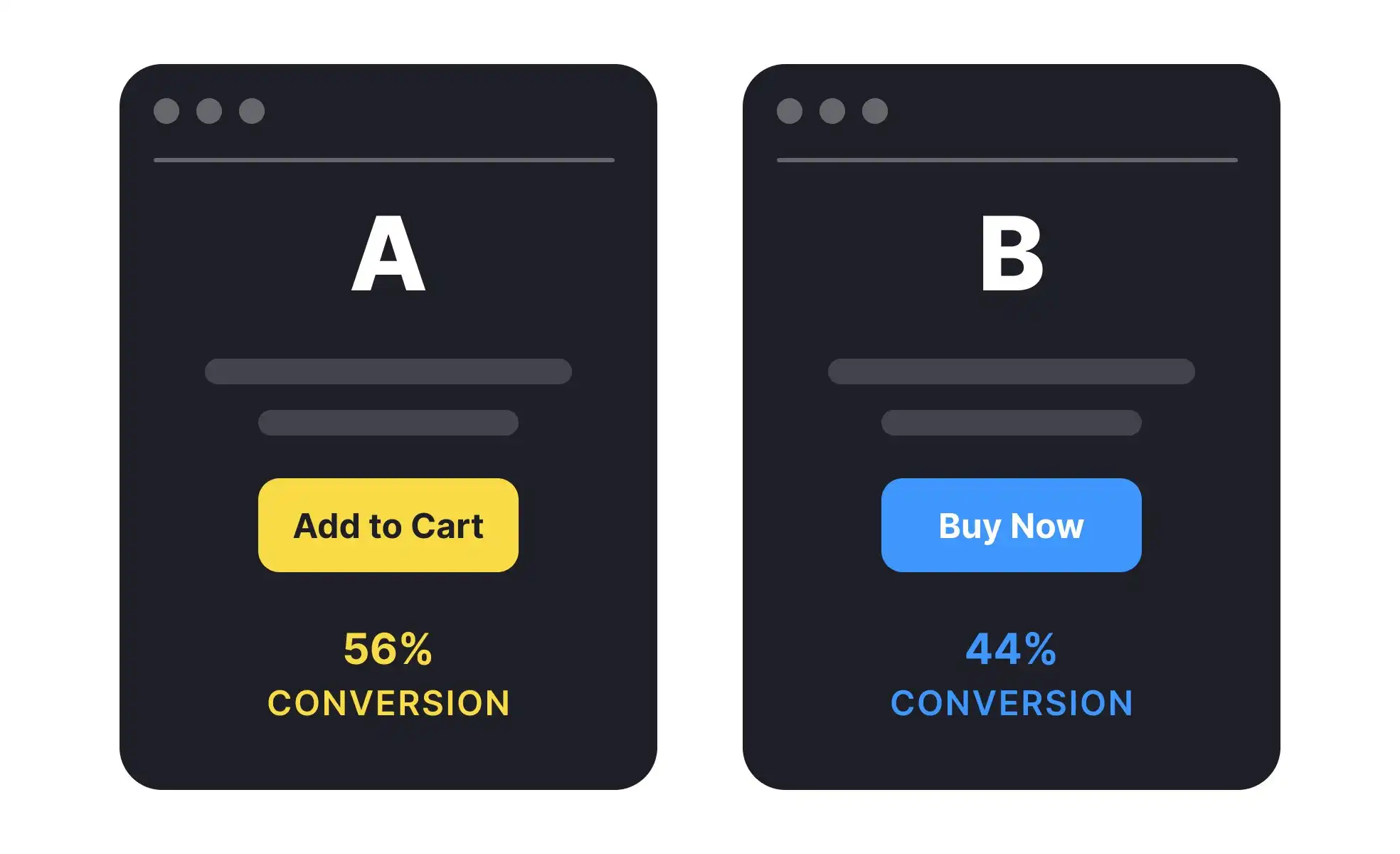
What works is knowing what actually drives your audience to act. This is where A/B testing comes in. It removes the guesswork and gives you solid data on what works and what doesn’t.
The Power of A/B Testing
A/B testing is crucial because it helps you make informed decisions. Instead of blindly picking what you think is best, you’re testing two options to see which performs better.
This data is key. It tells you what your customers truly prefer and what actually leads to better results.
With A/B testing, you can fine-tune every detail of your site, email, or ad. Small changes, like button color or headline wording, can make a huge impact.
A study found that simply changing the wording on a call-to-action button increased clicks by 49% (source: VWO). This shows how small adjustments, when tested properly, can lead to big improvements.
A/B Testing in Action
Let’s say you want to improve your website’s sign-up rate. Instead of guessing what works, you test two different versions: one with a bold, attention-grabbing headline and one with a simpler, more straightforward message.
After running the test, you see that the bold headline results in more sign-ups. Now you know exactly what resonates with your audience. This is the power of A/B testing—getting real data to back up your decisions.
When you have the right information, A/B testing becomes a tool for optimization, not just trial and error.
Testing, refining, and repeating. That’s how you get results. And it’s why A/B testing is so important. It takes the guesswork out of marketing and puts you in control.
When to Run A/B Tests
A/B testing should be part of your strategy from day one. It’s not just for landing pages or ads. You can test headlines, images, copy, and even call-to-action buttons.
The goal is always the same: to figure out what works best for your audience.
You should also use A/B testing when you make major changes to a campaign. If you update your website or create a new landing page, test different versions to see which performs best.
A/B Testing for Continuous Improvement
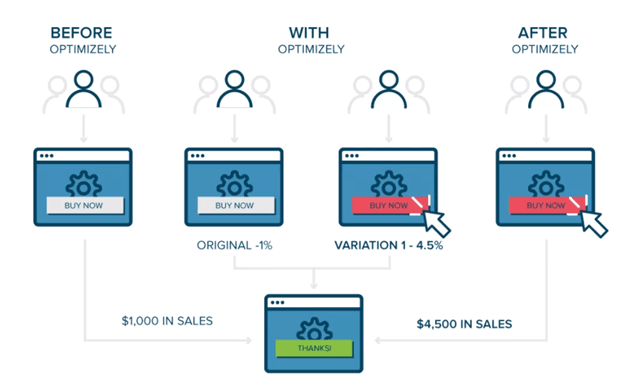
A/B testing isn’t just for one-time use. Once you know what works, you can keep testing to make things even better.
You can test variations of the same page over time, focusing on new elements like button placement, copy, or colors. By continually testing, you can keep refining your marketing and stay ahead of the competition.
Using an informational retrieval chatbot could help gather feedback or track behavior data, providing more insights into how users interact with your content.
A/B testing helps you take that data and turn it into actionable changes. This process becomes an ongoing cycle of learning and improving, ensuring that your marketing is always optimized.
When you approach A/B testing this way, it’s not about fixing mistakes—it’s about making everything you do work better. And that’s when you’ll see real growth.
Where is A/B Testing Used?
A/B testing isn’t just for one industry. It’s a powerful tool used in various fields to boost performance. Here’s how and where it works best:
E-commerce
In e-commerce, A/B testing helps optimize product pages and checkout processes. Small tweaks, like testing images or copy, can boost conversions up.
Lead Generation
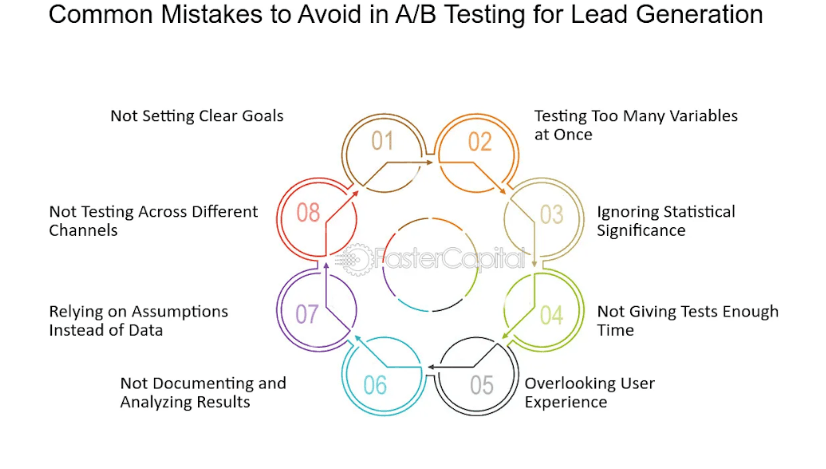
Test different forms, CTAs, and landing page designs to capture more leads. A/B testing helps pinpoint what drives the best response.
Email Marketing
A/B test subject lines, content, and timing to improve open and click-through rates. Personalized subject lines can increase opens by 26% (source: Campaign Monitor).
Online Marketing
A/B testing can be used to test ad copy, images, and targeting to maximize your ROI on platforms like Google, Facebook, and other online platforms
Offline Marketing
A/B testing can even be applied to direct mail and print ads. Test designs and messaging to see what generates the best response.
Website Optimization
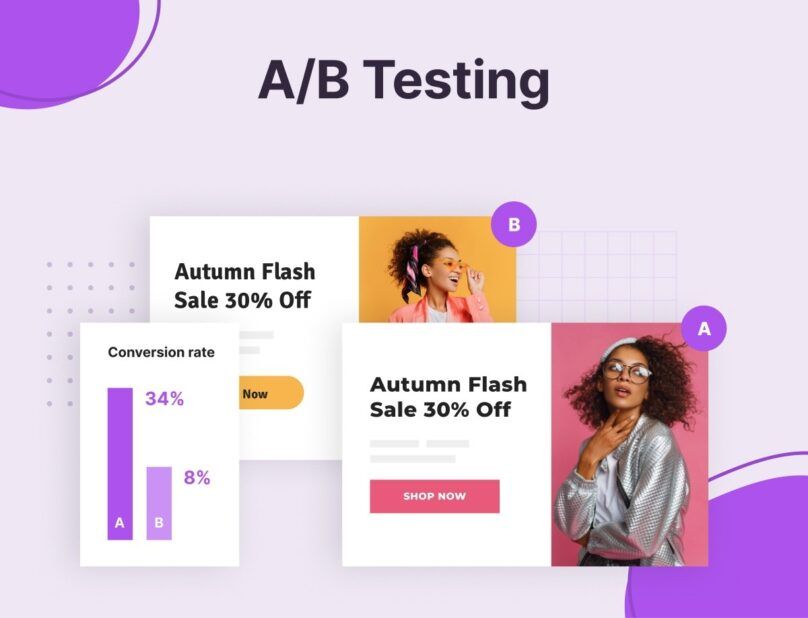
From homepage layout to product pages, A/B testing refines website design for better user engagement and conversion.
Campaign Launches
A/B testing is key when launching new campaigns or making big changes. It helps ensure your strategy is on the right path from the start.
A/B testing works at every stage of a marketing campaign. It’s all about refining and optimizing.
Using tools can give you deeper insights into user behavior, making your A/B tests more effective and data-driven.
Who can Benefit from A/B Testing?
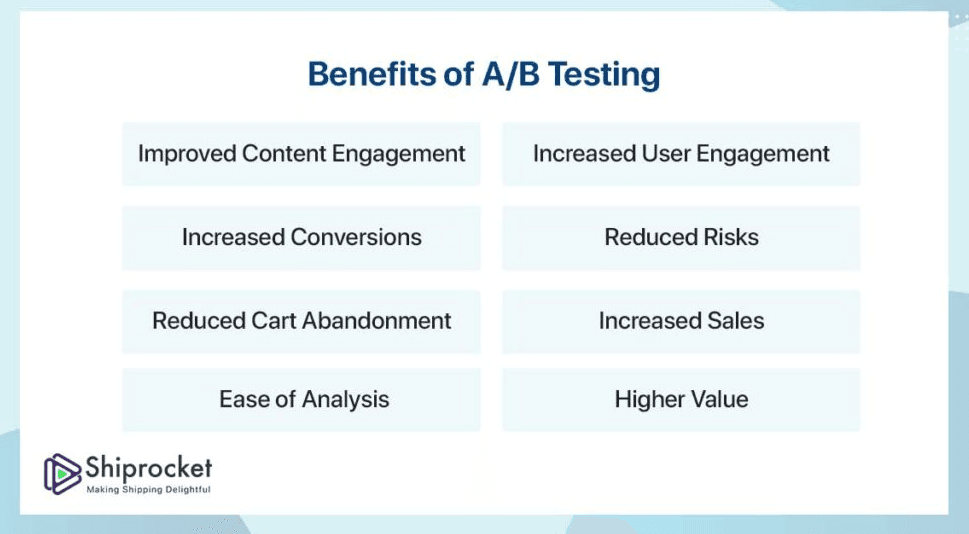
Any business that wants to improve its marketing efforts can benefit from A/B testing. E-commerce businesses can use A/B testing to increase conversion rates and increase sales.
Lead generation businesses can use A/B testing to optimize their landing pages and increase their lead generation.
Email marketers can use A/B testing to improve their open, click-through, and overall engagement rates. Any business that wants to improve its marketing results can benefit from A/B testing.
How Does A/B Testing Work?
A/B testing isn’t as complicated as it sounds. It is surprisingly simple—and powerful.
You start by creating two versions of something
- Version A (the control) and
- Version B (the variation).
Then, you split your audience into two groups.
One group sees Version A, and the other sees Version B. After a set period, you compare the results to see which version performed better.
Step 1
Setting Up Your Test
Define your goal, are you testing to increase clicks, conversions, or engagement? Once you know your objective, choose what to test—like a headline, button color, or call-to-action.
The key is to test one element at a time so you can clearly see what’s making the difference.
Step 2
Splitting the Audience
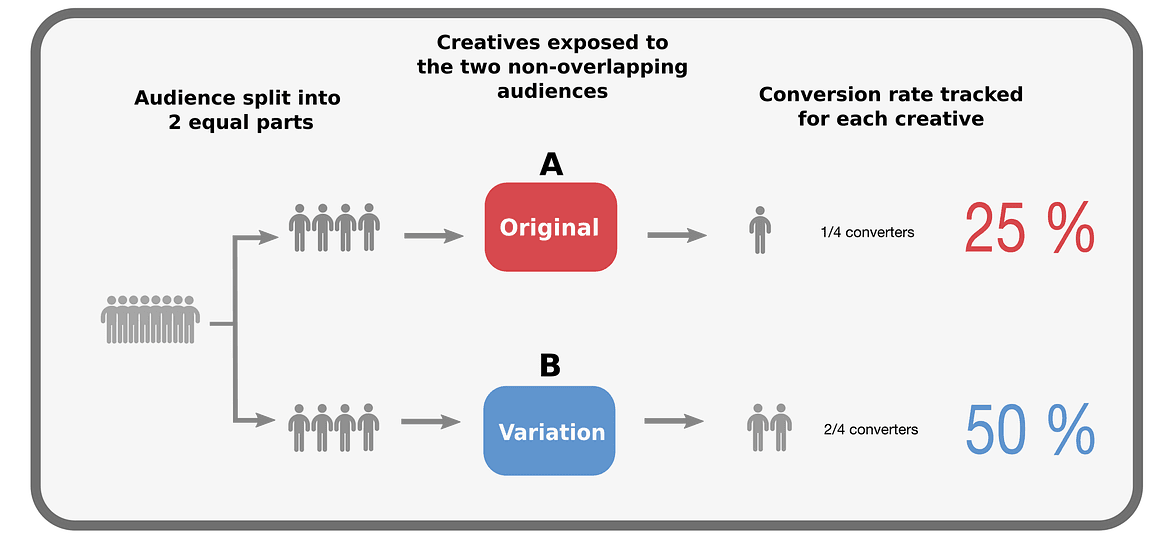
The next step is to split your audience randomly. Half of them will see Version A, and half will see Version B.
This ensures that your results aren’t skewed by factors like timing, demographics, or location.
Step 3
Gathering Data
Once the test is live, track performance. Look at metrics like click-through rates, conversion rates, or bounce rates.
Tools like Google Optimize or Optimizely can help you measure these results accurately.
Step 4
Analyzing Results
After gathering enough data, analyze the results. Which version performed better? Did Version B lead to more clicks? If so, you’ve found a change that works. If not, the original version (A) may be more effective.
Step 5
Making Improvements
A/B testing is not a one-time thing. Once you find a winner, you can keep testing other elements. The idea is to continuously improve by using real data, not guesses.
Step 6
Data-Driven Decisions
By tracking how users interact with the content, the chatbot can help you understand what’s working best, making your A/B tests more informed and efficient.
A/B testing helps you make decisions based on facts. Test, measure, improve, and repeat. It’s all about finding what works for your audience.
Use Cases of A/B Testing
A/B testing isn’t just a tool—it’s a way to fine-tune every step of your marketing strategy. From landing pages to checkout forms, it helps you make smarter decisions based on real data.
Landing Page Optimization
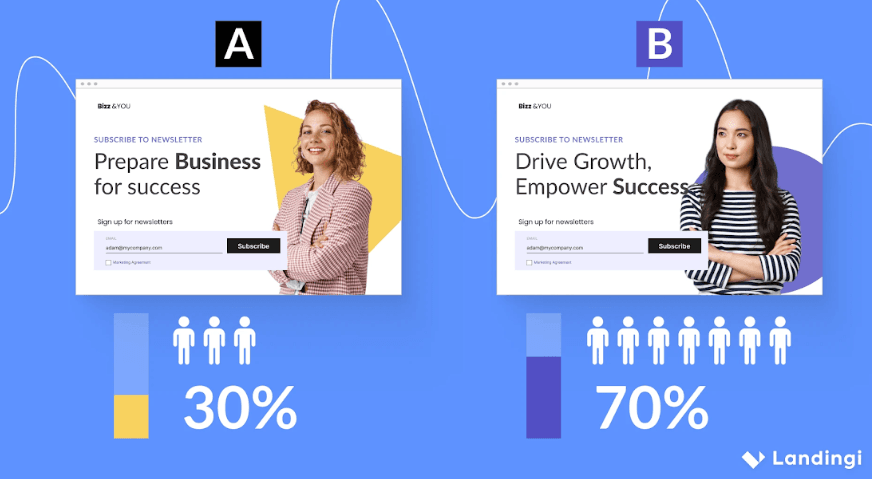
Landing pages are the first impression you make on a visitor. If they’re not engaging, you risk losing them.
A/B testing helps you test different headlines, images, or CTAs to find out what grabs attention and boosts conversions.
Ad Campaign Optimization
Advertising can be costly. A/B testing helps you get more out of your ad spend by testing different formats, copy, images, and targeting.
Whether it’s a Facebook ad or Google search ad, testing helps ensure you’re getting the highest ROI.
Product Page Optimization
Product pages are where you make the sale. A/B testing helps refine product descriptions, images, and pricing to find what drives more purchases.
Testing small changes—like a new product image—could increase sales.
Email Campaign Optimization

Email campaigns can be tricky. A/B testing allows you to test subject lines, email copy, and images to see what gets the best open and click rates.
A simple tweak, like a personalized subject line, can increase open rates. Small changes lead to big results.
Checkout Optimization
Your checkout page is the final step before a visitor becomes a customer. A/B testing can optimize the entire checkout process, from layout to payment methods.
You can reduce cart abandonment rates by testing different forms, shipping options, or payment methods.
Expert Tips for A/B Testing
A/B testing isn’t just about running experiments. It’s about making every test count. Get these details right, and your tests will deliver results you can trust.
Start with a Clear Hypothesis
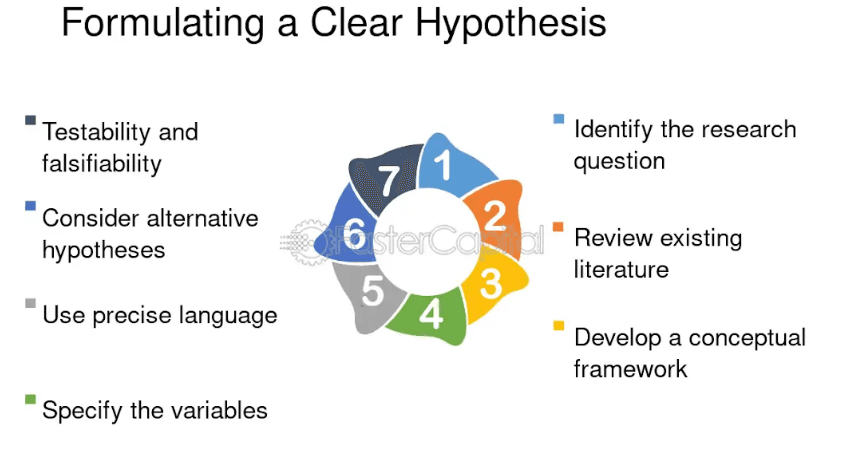
You need a reason for testing. Without a hypothesis, you’re guessing. A clear hypothesis keeps you focused on what you’re trying to prove.
For example, “I think changing the CTA color will increase clicks by 20%.” This gives you a target to measure against.
Test One Variable at a Time
It might be tempting to test a bunch of things at once, but that’s a mistake. If you change too many things, you won’t know which one made the difference.
Test one variable—like a headline or button color—to get clear, actionable results.
Use a Large Enough Sample Size
Small sample sizes lead to unreliable results. You need a big enough audience for your test to be statistically significant.
Without enough data, you’re just guessing. For accurate results, make sure your sample size is large enough to reflect your entire audience.
Test Across Different Devices and Browsers
Your results could be skewed if you only test on one device or browser. People behave differently on mobile, desktops, and tablets.
Test your variations across all devices and browsers to make sure your results represent everyone.
Don’t Stop Testing Too Early
It’s tempting to call it quits as soon as you see a positive result, but that’s risky. Give your test enough time to run and gather enough data.
Stopping too early could lead to false conclusions. Be patient—it’s worth it.
Enhancing with AI
Integrating tools like an informational retrieval chatbot can help you analyze the data even more effectively.
These chatbots track user behavior, giving you deeper insights into what works. This makes your A/B testing even more targeted and efficient, leading to better decisions.
Analyze Your Results Carefully
Once your test is done, take time to dig into the data. Look for patterns and insights that can help you improve. A successful A/B test isn’t just about finding a winner; it’s about learning from the process to optimize further.
By following these expert tips, you’ll make sure your A/B testing is not only effective but also efficient. Every experiment will bring you closer to the answers you need.
Conclusion
Most businesses are guessing their way through marketing. The truth? That’s the worst thing you can do. A/B testing removes the guesswork and lets you make data-backed decisions that actually work.
By testing different versions of content, you can find the most effective one for your audience. This leads to better engagement, higher conversion rates, and smarter use of your resources.
A/B testing isn’t just for big companies. Whether you’re a small startup or a large corporation, you can use it to refine your marketing strategies. No matter the stage of your campaign, A/B testing can help optimize your results and drive growth.
For businesses looking to improve their marketing performance, A/B testing is not optional—it’s essential.
Frequently Asked Questions (FAQs)
How can I identify which version performs better in an A/B test?
Compare key metrics like click-through rates, conversion rates, and bounce rates between the two versions. The version with better results toward your goal is considered the winner.
What marketing materials can benefit from A/B testing?
A/B testing can be applied to landing pages, email campaigns, ads, product pages, checkout processes, and even offline materials like print ads to optimize performance and drive results.
How do I ensure my A/B test results are reliable?
Ensure a sufficiently large and random sample size, test for an adequate duration, and focus on one variable at a time to ensure accurate, statistically significant results.
Can A/B testing help improve mobile experiences?
Yes, A/B testing is essential for optimizing mobile experiences. It can test mobile-specific elements like navigation, button sizes, and page load speed, improving engagement and conversions on mobile devices.
What should I do if my A/B test results are inconclusive?
Reevaluate the test setup, ensure adequate sample size, and consider testing new variations or extending the test duration. Running additional tests can help identify clearer results over time.
